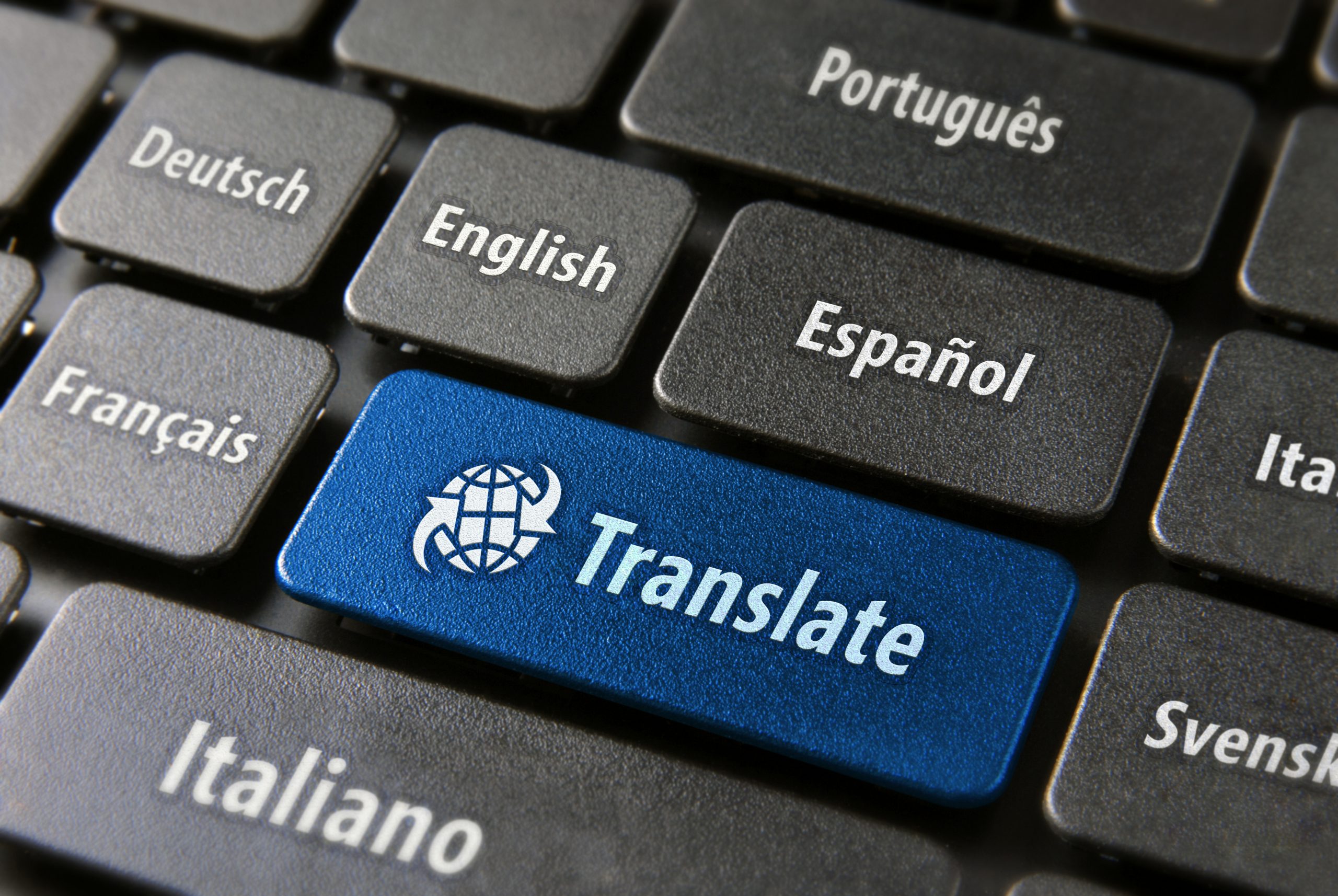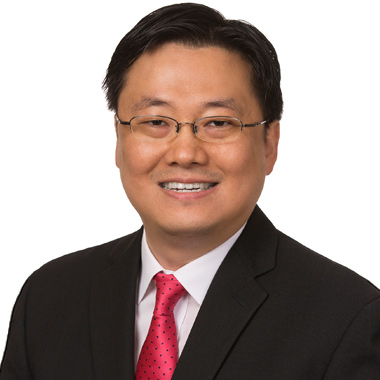“To avoid the outcome in IBSA Institut Biochimique… having a high-quality accurate English translation of the priority patent application may likely best serve the applicant.”
 Can a U.S. patent be invalidated due to an inaccurate translation of the non-English priority patent application? The answer is most definitely “Yes.” This article examines the recent Federal Circuit decision in which this occurred, IBSA Institut Biochimique, S.A. v. Teva Pharm. USA, Inc., 966 F.3d 1374 (Fed. Cir. 2020), and discusses the procedural framework on how to prevent and correct such a problem.
Can a U.S. patent be invalidated due to an inaccurate translation of the non-English priority patent application? The answer is most definitely “Yes.” This article examines the recent Federal Circuit decision in which this occurred, IBSA Institut Biochimique, S.A. v. Teva Pharm. USA, Inc., 966 F.3d 1374 (Fed. Cir. 2020), and discusses the procedural framework on how to prevent and correct such a problem.
IBSA Institut Biochimique, S.A. v. Teva Pharm. USA, Inc.
In IBSA Institut Biochimique, the patent owner IBSA initially filed an Italian patent application written in Italian and then, under the Paris Convention, filed a U.S. patent application claiming priority to the Italian patent application. Instead of filing the Italian patent application with the U.S. Patent and Trademark Office (USPTO), IBSA filed an English translation of the Italian patent application that translated the Italian “semiliquido” as “half-liquid.” IBSA Institut Biochimique, 966 F.3d at 1376.
The key issue at the district court was the meaning of the term “half-liquid.” IBSA asserted that “half-liquid” should be construed as “semiliquid, i.e., having a thick consistency between solid and liquid.” As support for this position, IBSA argued the term “semiliquido” appears in both the Italian patent application and the U.S. patent the same number of times and in the same places. Further, as part of the litigation, IBSA provided a certified translation of the Italian patent application that translated “semiliquido” as “semi-liquid.” In contrast, Teva argued that “half-liquid” should be either ruled indefinite or construed as “a non-solid, non-paste, non-gel, non-slurry, non-gas substance.” The district court ruled against the patent owner IBSA finding the claims invalid as being indefinite under 35 U.S.C. § 112. Id. at 1376-77.
In its decision, the Federal Circuit summarized the case law on indefiniteness. Under 35 U.S.C. § 112, the definiteness requirement “must take into account the inherent limitations of language.” Nautilus, Inc. v. Biosig Instruments, Inc., 572 U.S. 898, 909 (2014). Moreover, “a patent must be precise enough to afford clear notice of what is claimed, thereby ‘appris[ing] the public of what is still open to them.”’ Id. (quoting Markman v. Westview Instruments, Inc., 517 U.S. 370, 373 (1996)). As such, a “claim is invalid for indefiniteness if its language, read in light of the specification and prosecution history, ‘fail[s] to inform, with reasonable certainty, those skilled in the art about the scope of the invention.’” HZNP Meds. LLC v. Actavis Labs. UT, Inc., 940 F.3d 680, 688 (Fed. Cir. 2019) (quoting Nautilus, 572 U.S. at 901). In considering indefiniteness on appeal, determinations regarding “intrinsic evidence are reviewed de novo” and “factual findings about extrinsic evidence… are reviewed for clear error.” BASF Corp. v. Johnson Matthey Inc., 875 F.3d 1360, 1365 (Fed. Cir. 2017). IBSA Institut Biochimique, 966 F.3d at 1378.
As to intrinsic evidence, the court determined the meaning of “half-liquid” was not reasonably clear from either the claim language or the specification. In considering the prosecution history, the court noted there were a number of differences between the certified translation and the patent’s specification, besides the use of “half-liquid.” Such differences between a foreign priority document and the U.S. patent application can properly be viewed as intentional. See Abbott Labs. v. Sandoz, Inc., 566 F.3d 1282, 1290 (Fed. Cir. 2009). Moreover, during prosecution, the applicant included a dependent claim reciting “semi-liquid” that depended from a claim reciting “half-liquid,” indicating that the applicant intended “semi-liquid” and “half-liquid” to be different. IBSA Institut Biochimique, 966 F.3d at 1378-80.
Regarding extrinsic evidence, IBSA was unable to produce any scientific dictionaries containing “half-liquid,” and IBSA’s expert even testified that he had no knowledge of any textbooks or peer-reviewed scientific journals that used “half-liquid.” Moreover, the testimony of IBSA’s expert supported the position that “half-liquid” was not a well-known term in the art. Id. at 1380-81.
Thus, as both intrinsic and extrinsic evidence failed to supply a definite meaning of “half-liquid” translated from the original Italian “semiliquido,” the Federal Circuit held that the claims of the U.S. patent were invalid as being indefinite under 35 U.S.C. § 112. Id. at 1381. Hence, the patent was invalidated due to the inaccurate translation of the non-English priority patent application.
When is a Translation of a Non-English Priority Patent Application Needed?
A translation of a non-English priority patent application is typically required under two scenarios, namely when a U.S. patent application is filed either as a national stage of a Patent Cooperation Treaty (PCT) international application or under the Paris Convention.
For the first scenario, when the U.S. national stage is entered for a PCT international application, an English translation of the international application is required if the international application was filed in a different language and was not published in English. M.P.E.P. § 1893.01(d). Verification of the English translation is not necessary but may be required by the USPTO. 37 C.F.R. § 1.495(f). If the English translation is filed more than 30 months after the priority date, the USPTO’s processing fee is required, currently $140 for a large entity. 37 C.F.R. § 1.492(i), 1.495(c)(1)(i), and 1.495(c)(4).
For the second scenario, the U.S. patent application may be filed in a language other than English, and this typically occurs when the U.S. patent application also claims priority to a foreign patent application under the Paris Convention. 37 C.F.R. § 1.52(d). In this situation, an English translation of the application and a statement that the translation is accurate are required, along with the USPTO’s processing fee, which is currently $140 for a large entity. 37 C.F.R. § 1.52(d)(1) and 1.17(i).
How Can a Situation Similar to IBSA Institut Biochimique be Prevented and Corrected?
In IBSA Institut Biochimique, a U.S. patent was invalidated due to an inaccurate translation of a non-English priority patent application. Five techniques can be used to prevent this from occurring and, if the situation does occur, correct the problem.
First, and obviously, a high-quality accurate English translation of the priority patent application can be obtained. If the translation is accurate, invalidating the U.S. patent based on an inaccurate translation cannot logically occur. Sometimes, however, even the best translators make mistakes, or the translation was not sufficiently reviewed before filing, especially for technical terms (such as the Italian “semiliquido” in IBSA Institut Biochimique).
Second, a later-filed English translation may be used to correct a translation error. As discussed above for the two foreign filing scenarios, the U.S. patent application is filed in a foreign language, and then afterwards, an English language translation of the application is filed. This technique would incur the USPTO processing fee of currently $140 for a large entity. If a translation error is identified later, the applicant may seek to correct the translation error by showing that the translation error was obvious through a comparison of the original non-English application and the inaccurate English translation.
Third, an explicit incorporation by reference may be used to correct translation errors. An applicant can explicitly incorporate by reference a foreign priority application by including a statement such as: “This application claims priority to Japanese Patent Application No. _____, which is hereby incorporated by reference.” M.P.E.P. § 608.01(p)(I); 37 C.F.R. § 1.57(c). As acknowledged in the M.P.E.P., an explicit incorporation by reference can be used “[a]s a safeguard against the omission of a portion of a prior application for which priority is claimed.” M.P.E.P. § 608.01(p)(I)(B). As such, if a translation error is later identified, the explicit incorporation by reference of the priority application can be relied upon to correct the translation error.
Fourth, an implicit incorporation by reference may be used to correct errors with a translation. For U.S. patent applications with a filing date on or after September 21, 2004, a claim for priority to a foreign application made when the U.S. patent application was filed is considered an incorporation by reference of the priority foreign application as to material inadvertently omitted from the U.S. patent application. M.P.E.P. §§ 213.02(I) and 217(I); 37 C.F.R. § 1.57(b). The implicit incorporation by reference is provided as a safeguard to be used for “the correction of translation error in the U.S. application where the foreign priority application is in a non-English language.” M.P.E.P. § 213.02(I). To correct a translation error based on an implicit incorporation by reference, the requirements of 37 C.F.R. § 1.57(b) need to be satisfied. M.P.E.P. §§ 213.02(I) and 217(II). Further, the USPTO encourages applicants to use an explicit incorporation by reference so as not to be limited by the requirements to correct based on an implicit incorporation by reference. M.P.E.P. § 213.02(I).
Fifth, after patent issuance, a reissue application may be filed to correct a translation error. One of the most common bases for a patent owner to file a reissue application is to correct a disclosure that contains inaccuracies. M.P.E.P. § 1402. A translation error may be considered such an inaccuracy on which a reissue application may be filed.
Steps to Success
To avoid the outcome in IBSA Institut Biochimique, an applicant has a number of options available. Of the ones discussed here, having a high-quality accurate English translation of the priority patent application may likely best serve the applicant. To readily correct a translation error, an explicit incorporation by reference of the priority application may be included with the application, as it provides broader options for correction than an implicit incorporation by reference.
Image Source: Deposit Photos
Image ID:7513737
Copyright:cienpies

![[IPWatchdog Logo]](https://ipwatchdog.com/wp-content/themes/IPWatchdog%20-%202023/assets/images/temp/logo-small@2x.png)


![[Advertisement]](https://ipwatchdog.com/wp-content/uploads/2024/04/Artificial-Intelligence-2024-REPLAY-sidebar-700x500-corrected.jpg)
![[Advertisement]](https://ipwatchdog.com/wp-content/uploads/2024/04/Patent-Litigation-Masters-2024-sidebar-700x500-1.jpg)

![[Advertisement]](https://ipwatchdog.com/wp-content/uploads/2021/12/WEBINAR-336-x-280-px.png)
![[Advertisement]](https://ipwatchdog.com/wp-content/uploads/2021/12/2021-Patent-Practice-on-Demand-recorded-Feb-2021-336-x-280.jpg)
![[Advertisement]](https://ipwatchdog.com/wp-content/uploads/2021/12/Ad-4-The-Invent-Patent-System™.png)






Join the Discussion
3 comments so far.
George Kapsalas
September 15, 2021 05:12 pmBondiou, Ex parte, 132 USPQ 356 (Bd. App. 1961).
1961, not 1969, sorry. Wow, were we born.
George Kapsalas
September 15, 2021 04:59 pmIt is important to add that an explicit incorporation-by-reference statement of the type 37 C.F.R. 1.57(c) indicates was first given legal recognition in Ex Parte Bondiou (1969), subject to the requirement that it be(or was) originally present upon the original U.S. filing date. A very common mistake, that IBSA Institut Biochimique suggests to us could readily lead to malpractice, is for U.S. practitioners to add such an incorporation statement by amendment upon PCT national phase entry, or via after-filing-amendments generally. This has no effect even though the practitioner may assume it does, and attorneys should be cautioned that the provisions of 37 C.F.R. 1.57(b), a post-Bondiou rules change that followed decades after Bondiou, may not be as liberal as Bondiou incorporation practice. A little knowledge is a dangerous thing….even for large, prestigious national patent law firms…